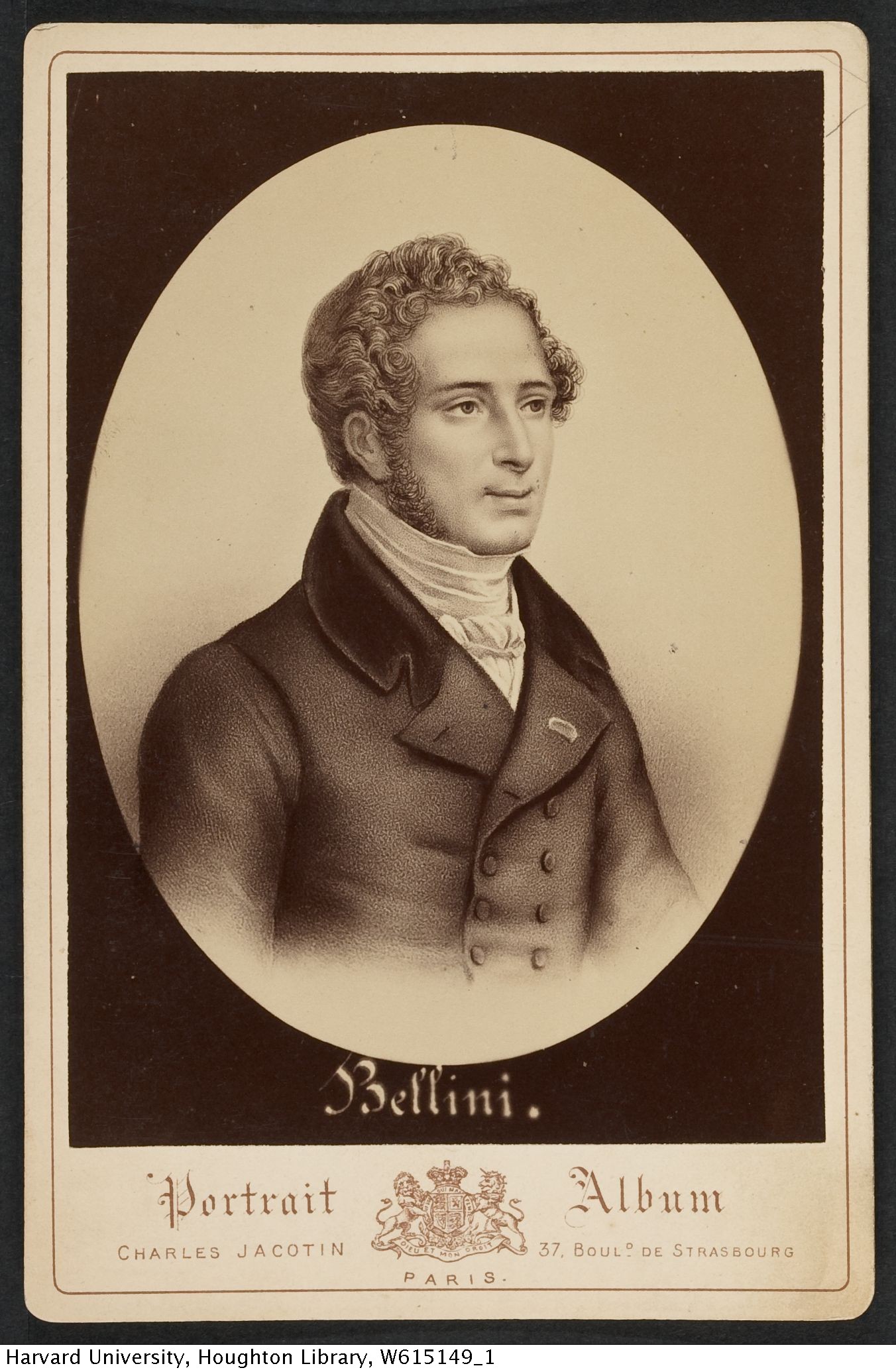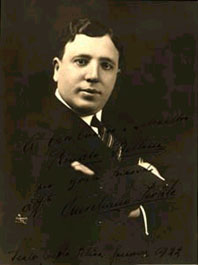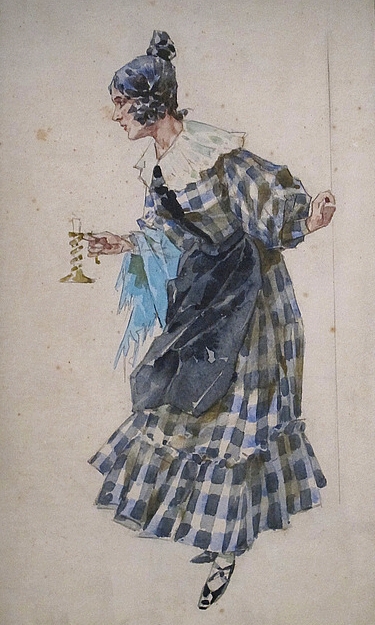|
Virginia Zeani
Virginia Zeani (born Virginia Zehan; 21 October 1925), Commendatore OMRI is a Romanian-born opera singer who sang leading soprano roles in the opera houses of Europe and North America. As a singer, she was known for her dramatic intensity and the beauty, wide range, and suppleness of her voice which allowed her to sing a repertoire of 69 roles ranging from the heroines in belcanto operas by Rossini and Donizetti to those of Wagner, Puccini and Verdi. She also created roles in several 20th-century operas, including Blanche in Poulenc's '' Dialogues of the Carmelites''. Zeani made her professional debut in 1948 as Violetta in ''La traviata'', which would become one of her signature roles; she has since sung the opera over 640 times. After her retirement from the stage in 1982, she became a well-known voice teacher. She was married to the Italian bass Nicola Rossi-Lemeni from 1957 until his death in 1991. A Distinguished Professor Emerita at Indiana University's Jacobs School ... [...More Info...] [...Related Items...] OR: [Wikipedia] [Google] [Baidu] |
Solovăstru
Solovăstru ( hu, Görgényoroszfalu, Hungarian pronunciation: ) is a commune in Mureș County, Transylvania, Romania that is composed of two villages, Jabenița (''Görgénysóakna'') and Solovăstru. The commune is located in the north-central part of the county, on the left bank of the Mureș River, just east of Reghin, and north of the county seat, Târgu Mureș. It is traversed east to west by the Gurghiu River, an affluent of the Mureș. It is surrounded to the east by Gurghiu commune, to the west by the city of Reghin, to the south by Beica de Jos commune, and to the north by Ideciu de Jos commune. As of 2011, Solovăstru had a population of 2,888, of which 85% were Romanians and 10.6% Romani. Natives * Virginia Zeani See also *List of Hungarian exonyms (Mureș County) This is a list of Hungarian names for towns and communes in Mureș County, Transylvania, Romania. {{DEFAULTSORT:List of Hungarian exonyms (Mures County) Mures County Hungarian exonyms in Mures ... [...More Info...] [...Related Items...] OR: [Wikipedia] [Google] [Baidu] |
Hora (dance)
Hora, also known as horo and oro, is a type of circle dance originating in Jewish communities and the Balkans but also found in other countries. Etymology The name, spelled differently in various countries, is derived from the Greek ('' khorós''): "dance" which is cognate with the Ancient Greek art form of ('' khoreía''). The original meaning of the Greek word may have been "circle". Also, the words ''hora'' and ''oro'' are found in many Slavic languages and have the meaning of "round (dance)"; the verb ''oriti'' means "to speak, sound, sing" and previously meant "to celebrate". The Greek () is cognate with Pontic Greek (), and has also given rise to the names of Bulgarian (), Macedonian (), Romanian , / in Serbo-Croatian, the Turkish form and in Hebrew (). The dance of Georgia also might be connected to the Horon dance in the neighbouring Turkish regions, as it rose out of the Adjara region, where Kartvelian Laz people co-existed for centuries with Greek Pon ... [...More Info...] [...Related Items...] OR: [Wikipedia] [Google] [Baidu] |
I Puritani
' (''The Puritans'') is an 1835 opera by Vincenzo Bellini. It was originally written in two acts and later changed to three acts on the advice of Gioachino Rossini, with whom the young composer had become friends. The music was set to a libretto by Count Carlo Pepoli, an Italian émigré poet whom Bellini had met at a salon run by the exile Princess Belgiojoso, which became a meeting place for many Italian revolutionaries. The opera is based on ''Têtes Rondes et Cavaliers'' (''Roundheads and Cavaliers''), a historical play written by Jacques-François Ancelot and Joseph Xavier Saintine and set in the English Civil War, which some sources state was based on Walter Scott's 1816 novel '' Old Mortality,'' while others state that there is no connection. When Bellini arrived in Paris in mid-August 1833, he had intended to stay only about three weeks, the main aim being to continue the negotiations with the Paris Opéra which had begun on his way to London a few months earlier. Ho ... [...More Info...] [...Related Items...] OR: [Wikipedia] [Google] [Baidu] |
Stoll Theatre
Stoll is a surname. Notable people with the surname include: * Barbara J. Stoll, American pediatrician and professor * Cal Stoll, American football coach * Caspar Stoll, entomologist * Clifford Stoll, American astronomer * David Stoll, American anthropologist * Elmo Stoll (1944–1998) Amish bishop and writer * Gloria Stoll Karn (1923–2022), American graphic artist born Glora Stoll * Günther Stoll, German television actor * Hermann Stoll, German geologist and prehistorian * Inge Stoll, German motorcycle racer * Ira Stoll, American journalist * Jack Stoll (born 1998), American football player * James Stoll, Unitarian Universalist minister * Jarret Stoll, Canadian ice hockey player * Jon Stoll, founder and president of Fantasma Productions * Maximilian Stoll (1742–1787), Austrian physician * Michael Stoll, American economist * Oswald Stoll, British founder of the Stoll Moss theatre group * Otto Stoll (1849–1922), Swiss linguist and ethnologist * Pablo Stoll, Uruguayan film d ... [...More Info...] [...Related Items...] OR: [Wikipedia] [Google] [Baidu] |
King Farouk
Farouk I (; ar, فاروق الأول ''Fārūq al-Awwal''; 11 February 1920 – 18 March 1965) was the tenth ruler of Egypt from the Muhammad Ali dynasty and the penultimate King of Egypt and the Sudan, succeeding his father, Fuad I, in 1936. His full title was "His Majesty Farouk I, by the grace of God, King of Kingdom of Egypt, Egypt and the Anglo-Egyptian Sudan, Sudan". As king, Farouk was known for his extravagant playboy lifestyle. While initially popular, his reputation eroded due to the corruption and incompetence of his government. He was overthrown in the Egyptian revolution of 1952, 1952 coup d'etat, and forced to abdicate in favour of his infant son, Ahmed Fuad, who succeeded him as Fuad II. Farouk died in exile in Italy in 1965. His sister, Princess Fawzia Fuad of Egypt, Princess Fawzia Fuad, was the first wife and Queen consort, consort of the Pahlavi dynasty, Shah of Iran, Mohammad Reza Pahlavi. Early life and education He was born as ''His Sultanic Highness' ... [...More Info...] [...Related Items...] OR: [Wikipedia] [Google] [Baidu] |
Margherita Carosio
Margherita Carosio (7 June 1908 – 10 January 2005) was an Italian operatic soprano. Her voice is preserved in many Parlophone and Ultraphon recordings made before World War II, as well as a memorable series made for HMV in London, beginning in 1946. She was still singing leading roles in her early sixties and was considered one of the leading bel canto sopranos of her day. She was born and died in Genoa. Biography Carosio was born in Genoa, the daughter of a singing teacher and composer, Natale Carosio, who not only supervised her studies but launched her on a career in public concerts at 14. She once said of her father: ''"Everything I became I owe to him. I used to say to him: 'I am good wool, but you are an extraordinary weaver.'"'' She appeared in public at the extraordinarily young age of 14. In 1924, still only 16, she made her operatic debut in the taxing role of Lucia di Lammermoor at the Teatro Cavour in Novi Ligure. In 1928, she was recommended by soprano Margherita ... [...More Info...] [...Related Items...] OR: [Wikipedia] [Google] [Baidu] |
Virginia Zeani And Nicola Rossi-Lemeni, 1975
Virginia, officially the Commonwealth of Virginia, is a state in the Mid-Atlantic and Southeastern regions of the United States, between the Atlantic Coast and the Appalachian Mountains. The geography and climate of the Commonwealth are shaped by the Blue Ridge Mountains and the Chesapeake Bay, which provide habitat for much of its flora and fauna. The capital of the Commonwealth is Richmond; Virginia Beach is the most-populous city, and Fairfax County is the most-populous political subdivision. The Commonwealth's population was over 8.65million, with 36% of them living in the Baltimore–Washington metropolitan area. The area's history begins with several indigenous groups, including the Powhatan. In 1607, the London Company established the Colony of Virginia as the first permanent English colony in the New World. Virginia's state nickname, the Old Dominion, is a reference to this status. Slave labor and land acquired from displaced native tribes fueled the growing p ... [...More Info...] [...Related Items...] OR: [Wikipedia] [Google] [Baidu] |
Aureliano Pertile
Aureliano Pertile (9 November 1885 – 11 January 1952) was an Italian lyric tenor. Many critics consider him one of the most exciting operatic artists of the inter-war period, and one of the most important tenors of the 20th century. Life and career Pertile was born in Montagnana, Northern Italy, 18 days after the birth of another celebrated tenor, Giovanni Martinelli, in the same town. He studied with Giacomo Orefice in Padua, and Gaetano Bavagnoli in Milan, before making his operatic debut as Lyonel in '' Martha'', in 1911, in Vicenza. After singing in regional Italy and South America, Pertile first sang at the premier Italian opera house, La Scala, Milan, in 1916. He appeared on this occasion as Paolo in Francesca da Rimini, opposite Rosa Raïsa. Pertile made his New York Metropolitan Opera debut as Cavaradossi in ''Tosca'', with Maria Jeritza in the title role, on 1 December 1921. In his only season at the Met, his other roles included des Grieux in '' Manon Lesca ... [...More Info...] [...Related Items...] OR: [Wikipedia] [Google] [Baidu] |
La Bohème
''La bohème'' (; ) is an opera in four acts,Puccini called the divisions '' quadri'', '' tableaux'' or "images", rather than ''atti'' (acts). composed by Giacomo Puccini between 1893 and 1895 to an Italian libretto by Luigi Illica and Giuseppe Giacosa, based on ''Scènes de la vie de bohème'' (1851) by Henri Murger. The story is set in Paris around 1830 and shows the Bohemian lifestyle (known in French as "") of a poor seamstress and her artist friends. The world premiere of ''La bohème'' was in Turin on 1 February 1896 at the Teatro Regio, conducted by the 28-year-old Arturo Toscanini. Since then, ''La bohème'' has become part of the standard Italian opera repertory and is one of the most frequently performed operas worldwide. In 1946, fifty years after the opera's premiere, Toscanini conducted a commemorative performance of it on radio with the NBC Symphony Orchestra. A recording of the performance was later released by RCA Victor on vinyl record, tape and compac ... [...More Info...] [...Related Items...] OR: [Wikipedia] [Google] [Baidu] |
Faust (opera)
''Faust'' is an opera in five acts by Charles Gounod to a French libretto by Jules Barbier and Michel Carré from Carré's play ''Faust et Marguerite'', in turn loosely based on Johann Wolfgang von Goethe's ''Faust, Part One''. It debuted at the Théâtre Lyrique on the Boulevard du Temple in Paris on 19 March 1859, with influential sets designed by Charles-Antoine Cambon and Joseph Thierry, Jean Émile Daran, Édouard Desplechin, and Philippe Chaperon. Performance history The original version of Faust employed spoken dialogue, and it was in this form that the work was first performed. The manager of the Théâtre Lyrique, Léon Carvalho cast his wife Caroline Miolan-Carvalho as Marguerite and there were various changes during production, including the removal and contraction of several numbers. The tenor Hector Gruyer was originally cast as Faust but was found to be inadequate during rehearsals, being eventually replaced by a principal of the Opéra-Comique, Joseph-Théodore ... [...More Info...] [...Related Items...] OR: [Wikipedia] [Google] [Baidu] |
Manon
''Manon'' () is an ''opéra comique'' in five acts by Jules Massenet to a French libretto by Henri Meilhac and Philippe Gille, based on the 1731 novel '' L'histoire du chevalier des Grieux et de Manon Lescaut'' by the Abbé Prévost. It was first performed at the Opéra-Comique in Paris on 19 January 1884, with sets designed by Eugène Carpezat (act 1), Auguste Alfred Rubé and Philippe Chaperon (acts 2 and 3), and Jean-Baptiste Lavastre (act 4). Prior to Massenet's work, Halévy (''Manon Lescaut'', ballet, 1830) and Auber (''Manon Lescaut'', opéra comique, 1856) had used the subject for musical stage works. Massenet also wrote a one-act sequel to ''Manon'', '' Le portrait de Manon'' (1894), involving the Chevalier des Grieux as an older man. The composer worked at the score of ''Manon'' at his country home outside Paris and also at a house at The Hague once occupied by Prévost himself. ''Manon'' is Massenet's most popular and enduring opera and, having "quickly conquer ... [...More Info...] [...Related Items...] OR: [Wikipedia] [Google] [Baidu] |
Mezzo-soprano
A mezzo-soprano or mezzo (; ; meaning "half soprano") is a type of classical female singing voice whose vocal range lies between the soprano and the contralto voice types. The mezzo-soprano's vocal range usually extends from the A below middle C to the A two octaves above (i.e. A3–A5 in scientific pitch notation, where middle C = C4; 220–880 Hz). In the lower and upper extremes, some mezzo-sopranos may extend down to the F below middle C (F3, 175 Hz) and as high as "high C" (C6, 1047 Hz). The mezzo-soprano voice type is generally divided into the coloratura, lyric, and dramatic mezzo-soprano. History While mezzo-sopranos typically sing secondary roles in operas, notable exceptions include the title role in Bizet's '' Carmen'', Angelina (Cinderella) in Rossini's '' La Cenerentola'', and Rosina in Rossini's '' Barber of Seville'' (all of which are also sung by sopranos and contraltos). Many 19th-century French-language operas give the leading female role to mezzos, inc ... [...More Info...] [...Related Items...] OR: [Wikipedia] [Google] [Baidu] |










